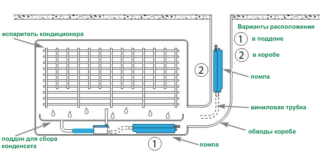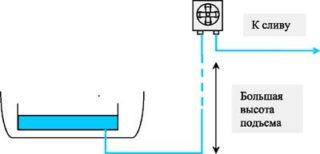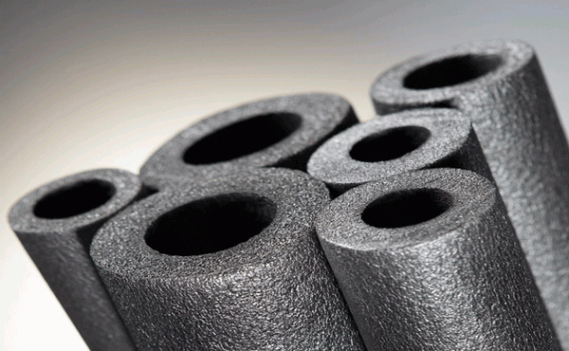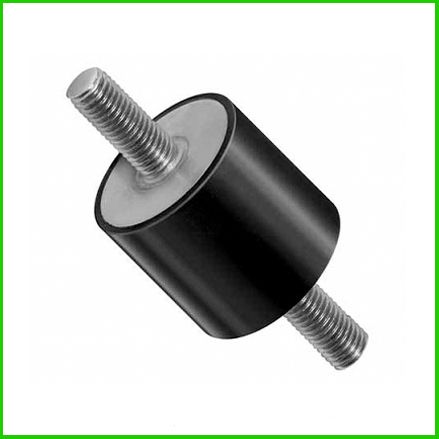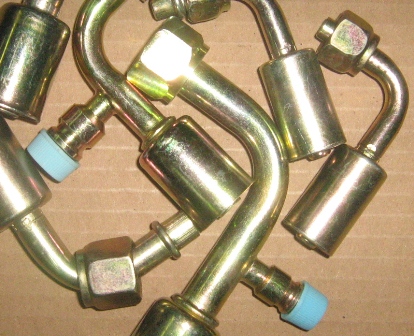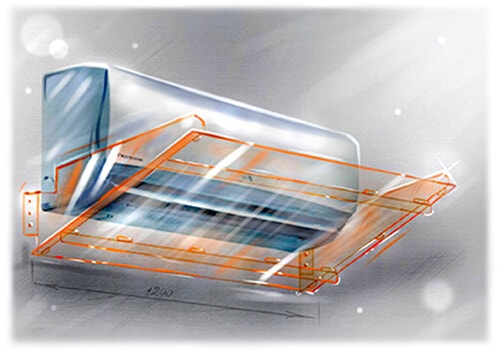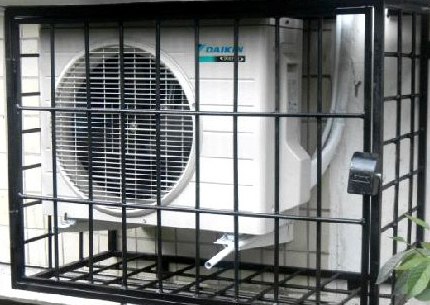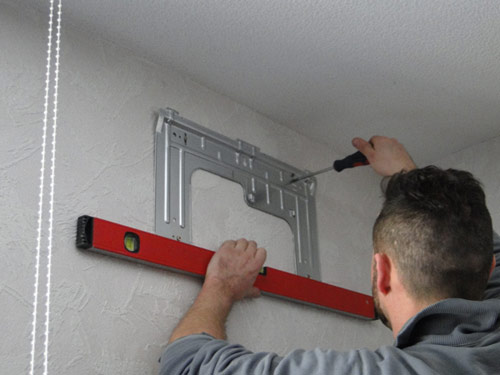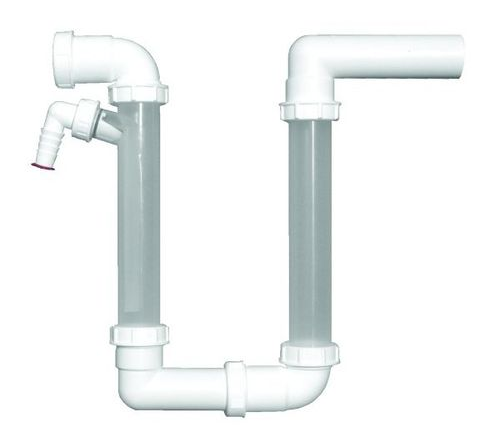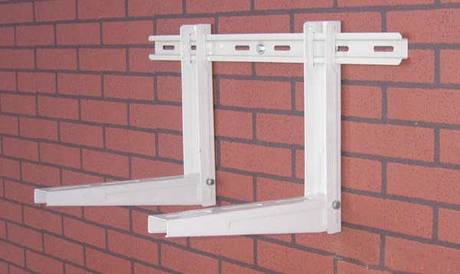During the operation of any air conditioner, a large amount of condensation forms. To remove the accumulating liquid outside, the air conditioners are equipped with a drainage system, which in its composition contains a special sump designed to collect condensate, a drainage pipeline through which the accumulated moisture is removed outside the room and a drain pump, with the help of which condensate is pumped.
Duct and cassette air conditioners, as well as split systems and premium air conditioning equipment are equipped with a built-in drain pump. Budget models, as a rule, do not have it, so the drain pump for the air conditioner must be purchased separately.
Sometimes, when laying a drainage pipeline, even a built-in pump cannot ensure the rise of condensate to a height sufficient to drain it "by gravity". In this case, an additional vacuum pump for air conditioners is selected and installed.
Types of drainage pumps and how they work
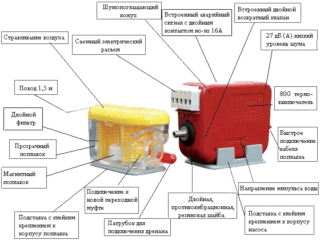
- built-in;
- separate;
- bulk;
- peristaltic.
They all work almost silently. The insignificant noise from the operation of the pumps is drowned out by the sounds that are emitted by the elements of the operating units of the air conditioners.
Despite the different layout solutions, drainage pumping units are assembled from the same type of units:
- storage tank where condensate is collected;
- liquid level sensor (float);
- the pump itself;
- a tube designed to drain water.
There are pumps in which, instead of a float, temperature-sensitive sensors are installed that react to contact with water or drying out of the pan.
In turn, the pump itself structurally includes:
- power electric drive;
- working area in which the fluid flow moves;
- 2 cast pipes - suction and discharge;
All drainage pumps, regardless of their type, work in the same way: in the process of accumulating condensate, the float rises, reaching a certain level, closes the contacts that drive the pump. The pump pumps out the accumulated liquid until the float drops into place and opens the electrical control circuit.
Drainage pumps are equipped with three-level liquid level sensors, which work as follows:
- Level I - the pump is turned off, as there is no water in the storage tank;
- II level - it is necessary to remove water from the storage tank - the sensor gives a signal to turn on the pump;
- Level III - emergency - the sensor signals that the amount of accumulated condensate has exceeded the permissible level and the air conditioner must be turned off. In this case, emergency shutdown is implemented individually in each model.
Inline pumps
The capacity of the built-in drainage pump is in the range from 5 to 150 l / h. Built-in pumps differ from other pumping units by their small size, which is due to the conditions of their placement. Devices of this type are usually equipped with low-power duct and central air conditioners.
Separate pumps
Unlike built-in pumps, separate pumps are structurally a two-block design. One block contains a pump and a control module, the other contains a storage tank and a liquid level sensor. The blocks are connected to each other by a flexible water hose and electrical wires coming from the float.
The block, which includes the storage tank, is small in size, which allows it to be placed directly in the drain pan or outside it. The pump unit is installed outside the air conditioner housing, for example, in the freon line box, and can be located above the liquid level in the drain pan. In this case, the distance to it from the indoor unit of the air conditioner should not be more than 2 meters.
According to their technical characteristics, split-type pumps are capable of lifting water to a height of 14 m, while providing a productivity in the range from 8 to 60 l / h.
Separate drainage pumps for air conditioners are installed when organizing low-power air conditioning systems equipped with internal wall or floor-ceiling units.
Filling pumps
When organizing a high-power air conditioning system, monoblock bulk drainage pumps are used. They differ from other units by the presence of a large storage tank, into which condensate flows "by gravity". In turn, this design requires that the pump is installed below the drain pan of the air conditioner.
The filling pumps are capable of raising water to a height of 3 meters, while providing high productivity (from 80 to 1500 l / h). They are most often installed in horizontal drainage pipelines that drain condensate into the sewer.
Peristaltic pumps
Due to the fact that these units have a low capacity (up to 10 l / h), they are used when organizing industrial or office air conditioning systems of low power, characterized by a significant length of vertical sections of drainage pipelines. As a rule, there is no need to use them for air conditioning of living quarters.
Criterias of choice
Drainage pumps are classified as products with long service life. They can fail only in the absence of proper care. In practice, the question of acquiring an additional pump most often arises when designing a drainage pipeline route.
When choosing a pump, it is necessary to take into account the power of the air conditioner and its design features. It is important not to miss the nuances of the interior of the room where it is planned to install the air conditioning device, as well as to determine the location of the condensate drain point and its distance from the drainage pump.
The following pump parameters have a great influence on the efficiency of the drainage system:
- power;
- performance;
- noise level;
- weight;
- dimensions.
When choosing a drainage pump, experts recommend purchasing products made by well-known companies.Otherwise, a potential consumer may be faced with the fact that a recently purchased pump for a split system will stop working. Moreover, most often they fail in it:
- control module;
- liquid level sensor;
- electric motor.
Installation features
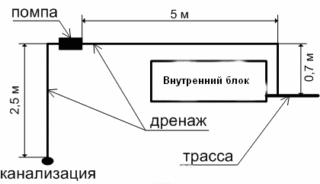
The accompanying documentation included with any drainage pump contains all the necessary recommendations for its installation. There are a number of general requirements that must be taken into account when starting work on equipping the air conditioner with an additional pump:
- it is recommended to install and securely fix the storage tanks in a horizontal position;
- ensure reliable heat removal from the heat-generating parts of the pump;
- all electrical connections must be made in accordance with the standard electrical diagram and reliably insulated;
- horizontal sections of drainage pipelines must have a slope of at least 3 °;
- the pipeline must be assembled from pipes with a calculated diameter.
A carefully assembled drainage system, equipped with an additional correctly selected pump, will solve the problem of removing condensate from the air conditioner, even in the most difficult case. This will allow you to avoid troubles, one way or another associated with water leaks: damage to the interior of the room, damage to the facade of the building, etc.

